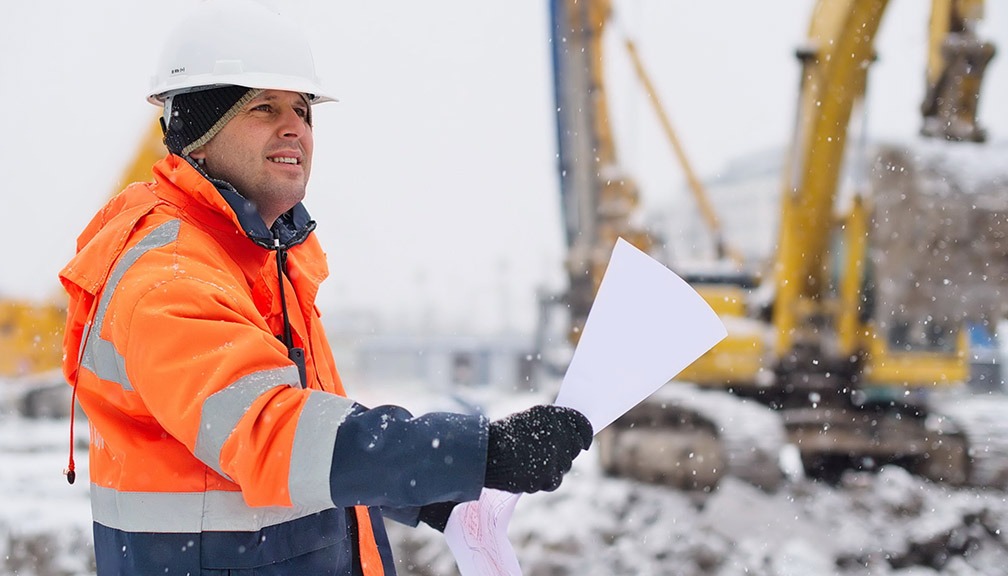Construction sites are faced with more extreme hazards during the winter months. Cold temperatures increase the risk of injuries and damage to equipment, and windy conditions can make any workday unpredictable. Knowing how to winterize your construction site and prepare your team can help you stay on schedule … safely.
Here are six helpful tips to winterize your construction site.
- Keep up with the current forecast. When working outdoors in harsh weather, knowing what to expect can be a big help. Closely monitor the weather forecast for upcoming workdays and track any changes – sometimes winter weather patterns can shift quickly. Always take the local climate into account when planning for a project. If bad weather is expected, make sure to communicate with the project team and add extra time for potential delays, if necessary.
- Stabilize the ground. Placing sediment, temporary or permanent vegetation, or netted mulch on any slopes or unstable surfaces is an important step in preparing for anticipated ice and snow. During snowfall or icy conditions, keep up with shoveling, plowing, and salting to create the best conditions. Keep the ground clear of any debris to remove as many slip and fall hazards as possible.
- Maintain your equipment proactively. Inclement weather can take an additional toll on the tools you use daily, so proper care can be a great help in preventing failure and extending their useful life. Put smaller tools away when you’re done to protect them and cover larger equipment whenever practical. When the cold does roll in, give larger machines ample time to warm up before using them, and thaw out frozen pipes with a heat gun, heat lamp, or space heater. Never use fire, however, as this is typically far more hazardous than helpful.
- Train staff for the cold. Slips, cold stress, or even frostbite are some of the potential risks from long exposure to frigid temperatures. Teach employees how to safely navigate and work the construction sites in these conditions. Go over the personal protective equipment they should wear, including layers of clothing, gloves, and ear protection, before the winter months begin. Provide and encourage drinking warm water to help the team stay warm and hydrated.
- Follow heating equipment procedures. Heaters can provide additional comfort and safety for your team in colder temperatures, but they can be dangerous if the right precautions aren’t taken. Always plug heaters into the correct outlets whenever in use and place them in safe, clearly distanced spaces away from machinery and other sensitive or susceptible objects. Alert workers where heaters are located and advise them to operate with care at all times.
- Schedule work with appropriate limits. Even when you’re monitoring the weather closely, conditions can become worse than expected. Know when it’s no longer safe for your team to work and call it a day. Setting up specific times to work during the day when the weather will be best is also a great way to maintain safety while maximizing productivity.
Now that you know how to winterize your construction site, be sure your contractors insurance is giving you the best protection all year long. Talk to one of our local, independent agents about coverage.


